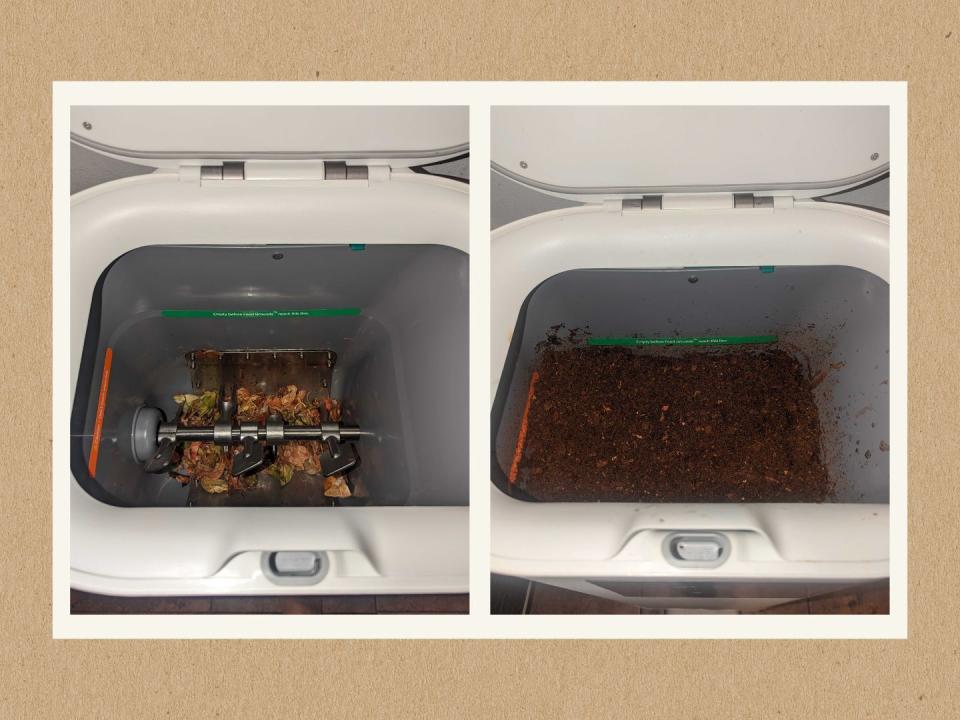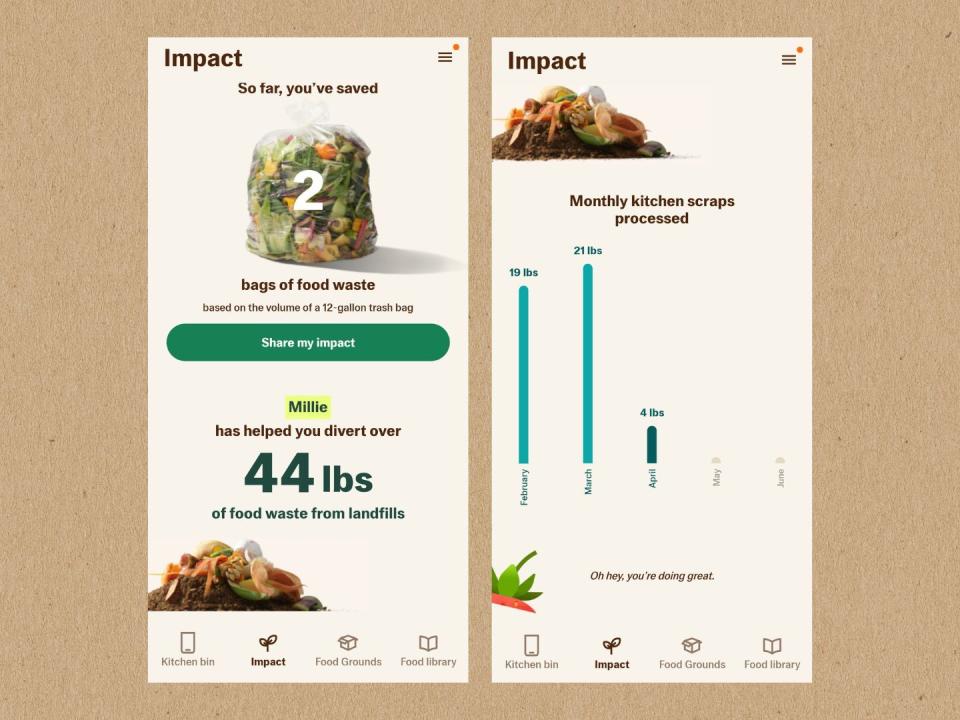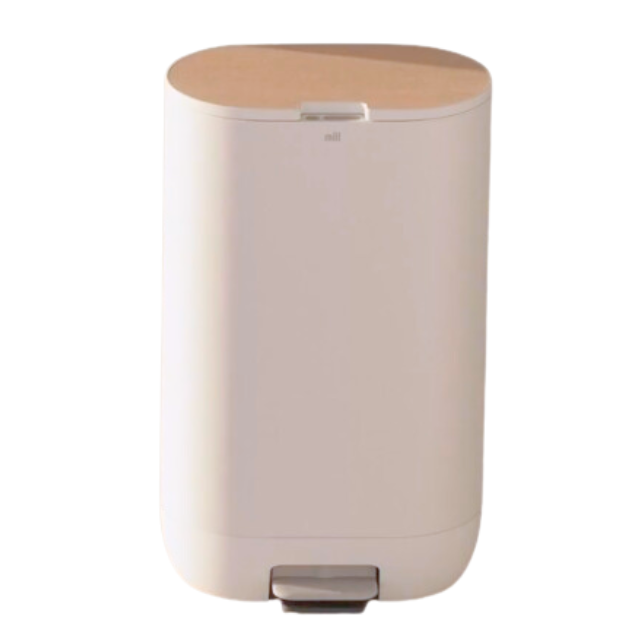This Fancy Food-Recycling Bin Has Changed the Way I Think About Food Waste

If you purchase an independently reviewed product or service through a link on our website, SheKnows may receive an affiliate commission.
I love the idea of composting. The reality? Not so much. Here’s the thing: I live in a small New York City apartment and my home composting pail — a small but perfectly useful freebie that my husband picked up from the library — quickly fills up with food scraps from my family of four. And then it sits. And sits. And sometimes sits some more. My local greenmarket food scrap drop-off is on Sundays, and the fact is there are weeks — especially during the summer, when my weekends are filled with kids’ sports events — where I just don’t make it. The food scraps in the pail turn into a gloopy, fuzzy, moldy mess.
More from SheKnows
Today's Top Deals
Lululemon Just Dropped a Pickleball Collection Full of Stunning Exercise Dresses & Skorts
You Can Save Up to 40% Off Fire TV Products During Today's Huge Amazon Sale
Is this an insurmountable problem? No, it’s not. Could I pop the bin in the freezer? Yes, I could. (Although to be fair, my fridge and freezer are small, and bags of food scraps take up valuable real estate that I’d rather use for the food I plan to eat.) All of this is to say that when I was offered the chance to try the Mill Kitchen Bin, an electronic, app-operated food recycling system that turns food waste into dried grounds that then become chicken feed, I was game.
How Does the Mill Kitchen Bin Work?
Mill bills itself as an “odorless, effortless, fully automated” way to reduce food waste. Not exactly a composting system, the Mill kitchen bin works by drying and grinding food scraps; shrinking them by 80 percent overnight (or whenever you set your Mill bin to operate). When your bin is full, you empty it into Mill-provided boxes that you can schedule to be picked up and returned to the company
My Mill bin arrived on a February afternoon in an enormous box and was heavy. (The total weight of the bin is 58 pounds!) I wondered about the environmental impact of manufacturing and mailing such an appliance, but I was enamored as soon as I got it out of the box. The Mill kitchen bin is sleek and modern. It’s easily the best-looking thing in my kitchen. The set-up was easy: I downloaded the app, named my bin (I went with the admittedly unoriginal Millie), and scheduled my nightly run cycle.
Then it was time to start filling the beautiful bin. In went banana peels, coffee grounds, and avocado pits. (An entire avocado, if I’m being honest. Sob.) In went plate scrapings and rotisserie chicken skin and bones. The Mill can handle a lot; still, there’s a detailed list of things that aren’t OK to put in your bin, including large meat bones, flowers and plants, compostable containers, greasy liquids, and — inexplicably — large amounts of sugar, cake, or cookies.
Watching what happens to the food scraps you put in a Mill bin is pretty cool. Unlike my scary compost pail, there’s no stinky, moldy mound of muck; instead, the Mill turned my kitchen waste into something that initially looked like potpourri and then took on a coffee ground-like consistency.

How Long Does It Take to Fill a Mill Kitchen Bin?
Here’s where I admit that my family wastes a lot of food. (I’m hardly alone there: Shamefully, Americans throw away nearly 43 million tons of food a year.) Mill kitchen bins can process 40 pounds of wet food scraps before needing to be emptied; it took about 5 weeks for our Mill bin to reach capacity. In the two months we’ve been using it, our bin has processed 44 pounds of kitchen scraps. We filled it more in March than we did in February, which makes sense considering that we didn’t start using it until the second week of that short month. (Still, it’s a measurement that’s moving in the wrong direction.) And we’ve prevented roughly two bags’ worth of food scraps from going into a landfill. This information is easily available to me in cheery graphics on the app — making it easy to feel good about your impact, and it certainly makes sense that Mill wants to make its value to customers clear.

How Much Does a Mill Kitchen Bin Cost?
That “I’m doing something good” visual is all the more important considering the Mill kitchen bin price. This sleek appliance isn’t cheap. Purchasing the bin outright will set you back $999. (That’s double the price of a competitive product like the Lomi, and obviously way more expensive than your average simple compost pail.) A less painful option is to rent it monthly for $49.99, which lets you cancel whenever or if ever you want, or to rent it annually for a one-time payment of $359.88, which works out to $29.99 a month.

Mill Kitchen Bin
$49.99 per month
Is the Mill Kitchen Bin Worth It?
There are elements of the Mill that I haven’t tested yet, such as the return shipping, so I can’t comment on the full experience. (Each Mill return box can hold three bins’ worth of food grounds; I’ve only emptied my bin once, so I have a ways to go before I need to schedule a shipment.)
Considering the pros and cons can be subjective, but for me the pros are: the Mill kitchen bin is sleek and attractive, it’s quiet, it’s easy to use, and it reduces my overall trash and saves food from landfills, . As for the cons — it’s expensive, and there’s certainly an environmental impact related to electricity and shipping.
But two months in, I’m loving my Mill and considering springing for the annual subscription. Yes, it’s pricey, and yes, I could make do with a no-tech compost pail. But the convenience is appealing, and the whole process is keeping my family’s food waste top of mind for me: As I toss scraps into the bin, I’m more cognizant than ever of what (and how much) I’m wasting — and I’m inspired to waste less.
More Top Deals from SheKnows
Best of SheKnows
20 Best Cat-Approved Toys on Amazon to Treat Your Fur Baby — All Under $30
13 Tinted Lip Balms Highly Recommended by Amazon Shoppers — All $10 or Less
If You Don't Want to Spend Hundreds on a KitchenAid, These Stand Mixers Have Amazing Reviews
Sign up for SheKnows' Newsletter. For the latest news, follow us on Facebook, Twitter, and Instagram.

